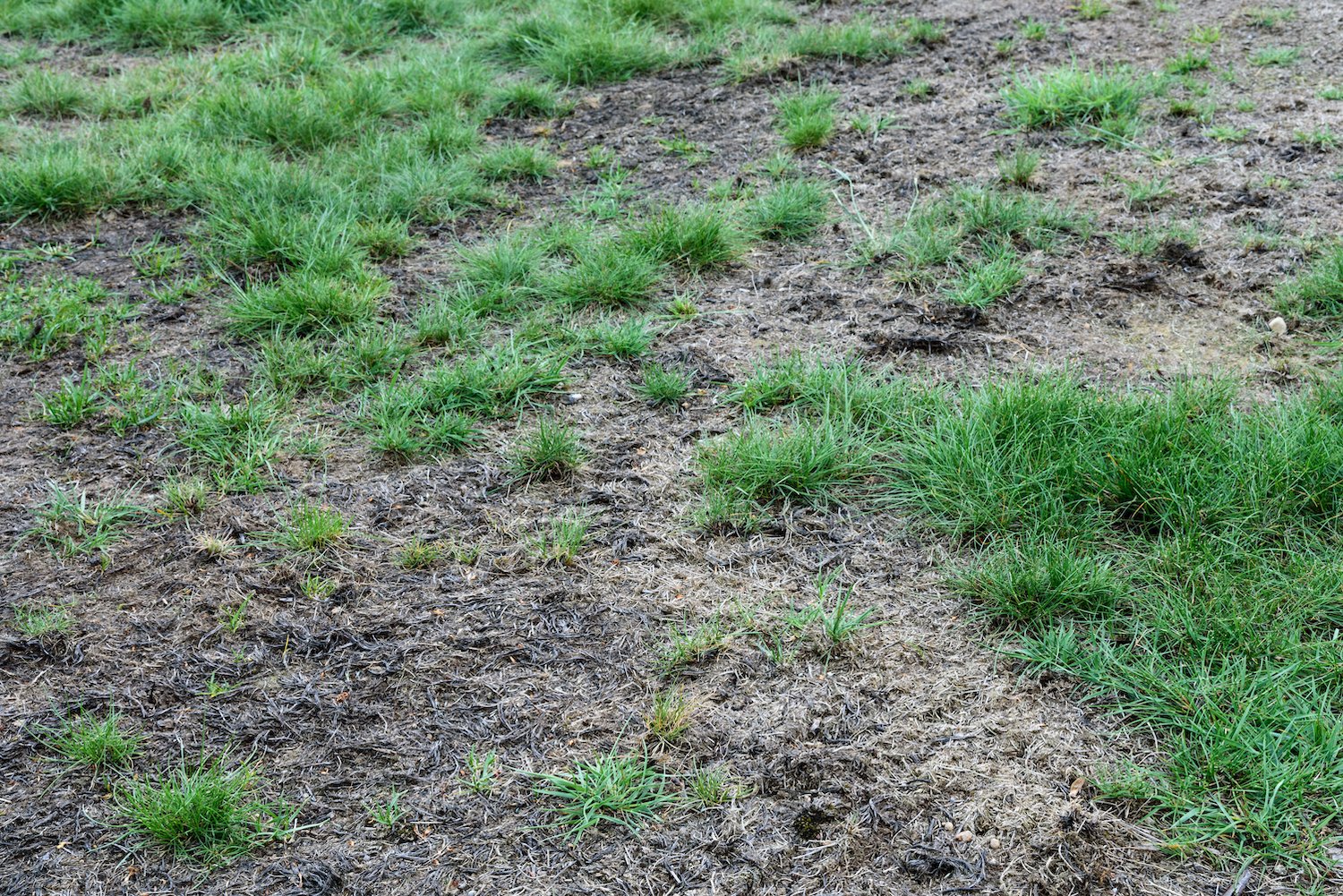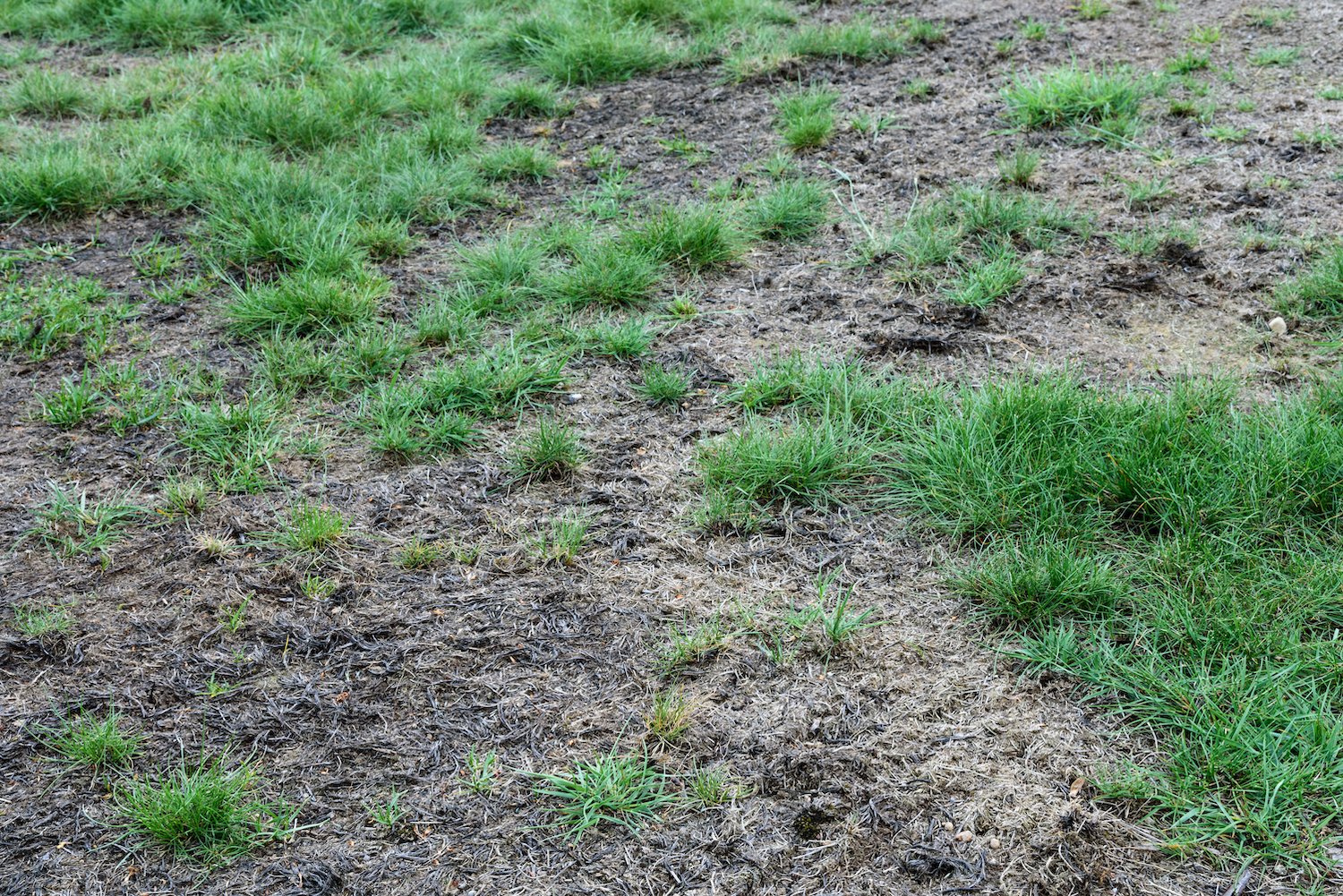
Brown grass can be a confusing sight to see on your property.
But before you can address this problem, you need to know what’s causing it — and if the grass is still alive.
It’s difficult to tell if your grass is dead or just dormant. Grass that is dead will not come back, but there are steps you can take to have a lush, green lawn again.
On the other hand, dormancy is a natural protection mechanism for grass to withstand weather changes.
So you're wondering how to tell the difference between dead and dormant grass?
Here are five ways you can tell — and improve your lawn in the process.
You may not be able to see a real difference between dead and dormant grass, but there is a test you can perform to get an answer.
Find a section of brown grass, grab some in your hand and pull. If the grass comes out easily with no resistance, it is dead.
Dead grass isn’t coming back, so you’ll need to take steps to regrow your lawn. You can replace the grass by seeding or sodding — or installing a new type of landscaping material such as mulch, rocks or groundcover.
To seed your lawn, first mow the grass (collecting the clippings) shorter than normal so the seeds can better reach the ground. You should also add soil amendments to give the seeds a healthy environment to grow before spreading the seeds.
Laying sod can be a strenuous task. You’ll need to first remove the dead grass and prep the soil before laying the new sod.
Whether you seed or sod, you’ll need to continue to water and feed the lawn after installation to ensure healthy growth.
Is your entire lawn brown, or are there distinct patches of brown grass?
When your whole lawn is the same brown color, the grass may be dormant. However, if there are areas or circles of brown grass, that can point to these spots being dead.

Before you count this grass out, you’ll need to rule out possible pests and disease that can cause similar symptoms. Work with a professional to have the area and soil tested to find the cause of the brown turf.
The temperature and weather conditions will greatly affect your lawn’s appearance.
Cool-season grasses will go dormant during prolonged heat periods, while warm-season grasses will go dormant during the winter. The grass is still alive and will become green again when the correct temperature returns.
If you want your grass to remain green year round regardless of the temperature, you can plant a mixture of cool- and warm-season grasses.
Excessive heat and dry conditions can also cause the grass to become dormant, but that can lead to the grass dying if the proper steps aren’t taken. That can make it difficult to know if the grass is still alive.
.jpg?width=800&height=548&name=AdobeStock_229815835-1-(1).jpg)
You can get a better idea of what’s causing the brown color by following a consistent watering schedule. Watering will help dormant grass become green again, while dead grass will remain brown.
It can be hard to decipher between dead and dormant grass — and even more difficult to know what you should do to treat the problem.
Hiring a lawn care company can help you figure out what’s going on with your lawn and how to best treat it.
Michael Hatcher is Founder / Chairman of Michael Hatcher & Associates.
These Stories on Lawn Care
8255 Center Hill Rd
Olive Branch, MS 38654
8164 MS-178
Olive Branch, MS 38654
Phone: (901) 445-9336
Fax: (901) 853-7353
Copyright © Master Lawn | All Rights Reserved.